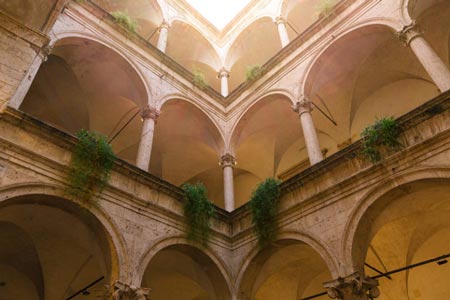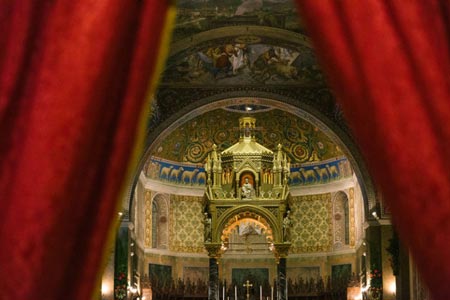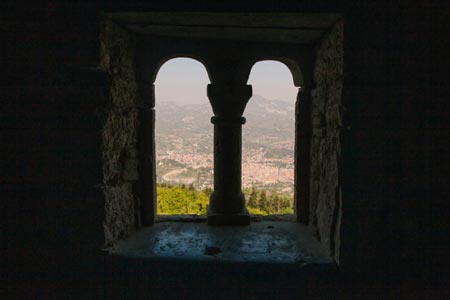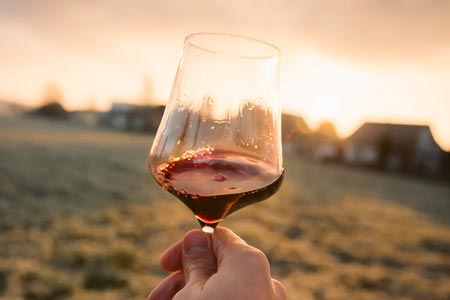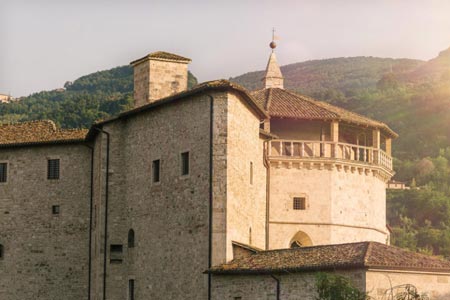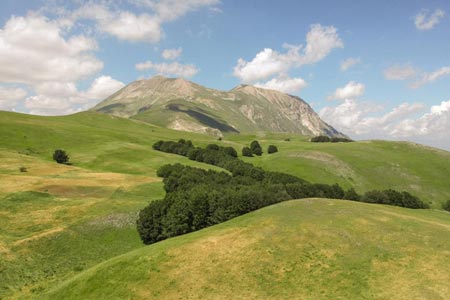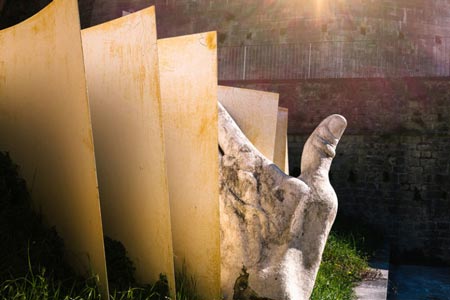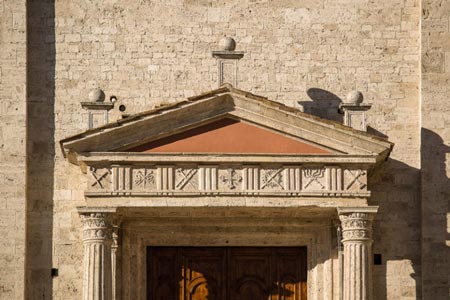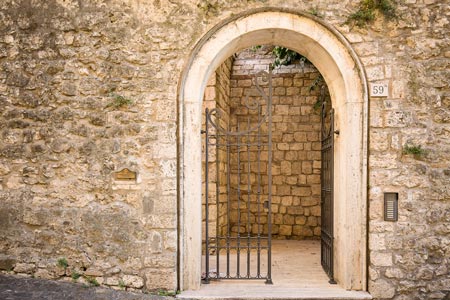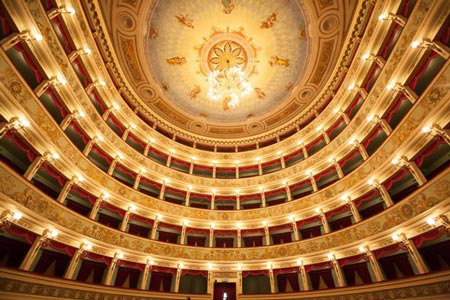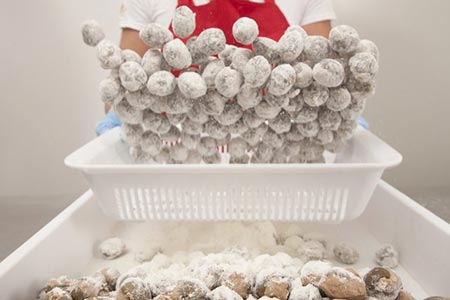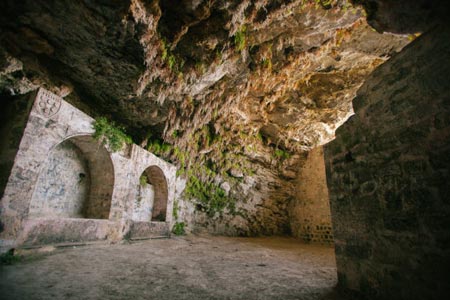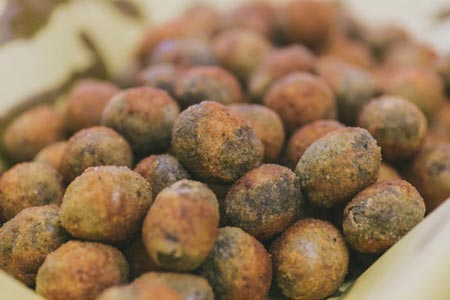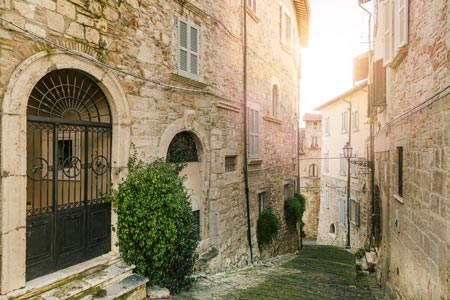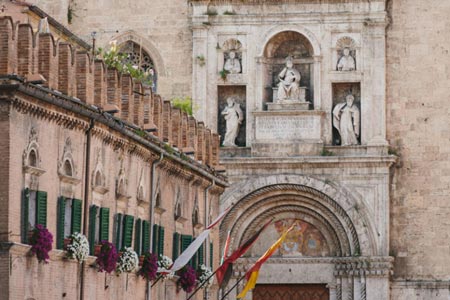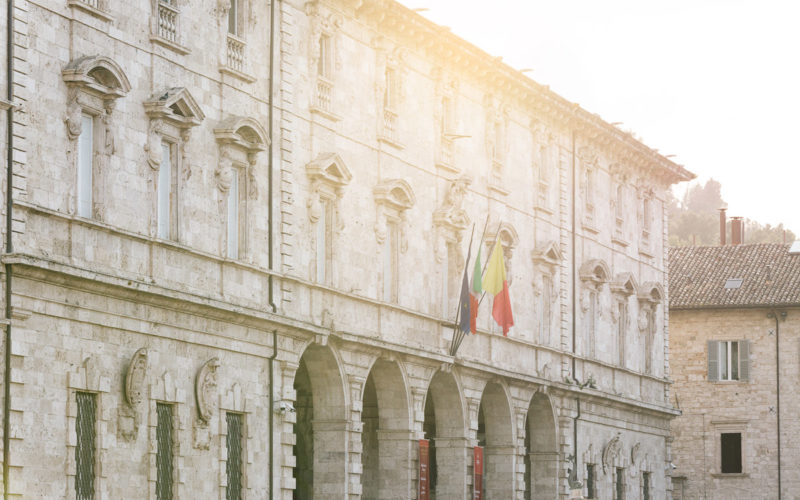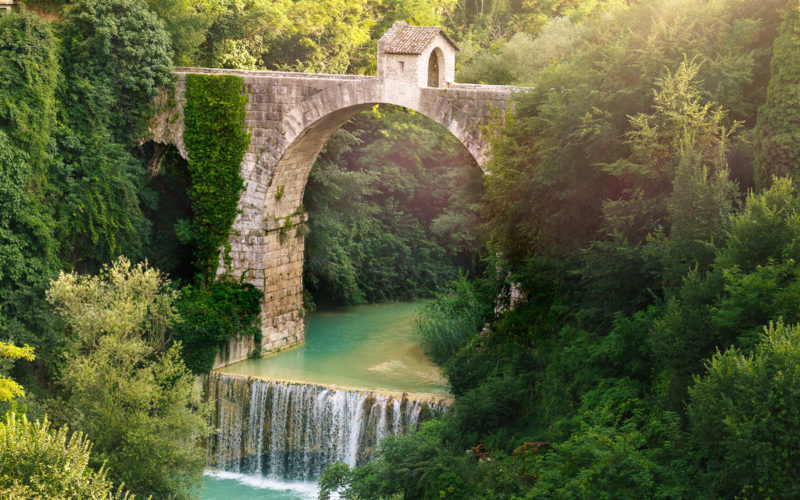Historic churches to visit in Ascoli Piceno: St. Francis
The majestic Church of St. Francis, which borders the northern side of Piazza del Popolo, is surely one of Ascoli Piceno’s main historic attractions, one you can’t really miss when visiting the city. Its construction took around three centuries, when art and architecture were experiencing their transition from Romanesque to Gothic style. St. Francis visited Ascoli in 1215 and the story has it that thirty young boys were so inspired by his preaching that they decided to follow his teachings and retreat in prayer at Colle San Marco, a hill south of the city.
The first Franciscan community in Ascoli Piceno was established outside the city walls, in an area called Campo Parignano, where the Romanesque Church of Saints Peter and Paul lies. In 1257, by decision of Pope Alexander IV and the General Minister Bonaventura da Bagnoregio (then St. Bonaventure), the Franciscans were granted permission to sell their properties outside the city walls and to buy another one in the city, “in vico qui scadya nominatur” (today’s Piazza del Popolo).
The first stone for the construction of the Church was laid in 1258 and in 1371, although not yet complete, it was consecrated. Originally, by order of Bishop Giovanni Acquaviva, the church was named after St. John the Baptist. During the 15th century, the side chapels, the matronea and the two bell towers were built, while it was in the 16th century that the ceiling was vaulted: first, the side aisles and then the central aisle, the side chapels and the main altar. The Church, which has a Latin-cross plan, was completed in 1549 with the construction of the dome.
In the 18th century, some Baroque elements were added but in 1852-58 the church was restored to its original simplicity. The interior is characterized by ten polygonal pillars that divide the building in three wide aisles. On the fourth pillar on the left stands the travertine pulpit, which was built in 1607 based on a drawing of Antonio and Ventura Giosafatti; on the left, at the bottom of the aisle, is a recess with a precious wooden crucifix, believed to be miraculous because -as the legend has it- during its moving from Palazzo dei Capitani to its current location, the crucifix began to bleed. According to historical documents, this miracle dates back to Christmas 1535, when Palazzo dei Capitani suffered a devastating fire and was therefore quickly emptied of all those precious objects that survived the fire. Among the witnesses of this tragic event was Cola dell’Amatrice, called on by the Bishop to reach Piazza del Popolo and see what was going on.
In the left arm of the transept are kept the remains of Blessed Corrado Miliani (in English often referred to as Conrad of Ascoli, 1234-89), brother of Girolamo Massi, to whom Conrad foretold that he would become a Pope. As a matter of fact, Friar Girolamo became the first Franciscan Pope in history in 1288 and chose the name of Pope Nicholas IV.
On the wall of the right aisle, by the side entrance, is the funerary monument dedicated to Countess Costanza Cavina Saladini, which her husband commissioned to Ignazio Cantalamessa to commemorate his young wife. Particularly noteworthy are the statues by Emidio Paci embellishing the monument.
The rich sacristy of the church lies to the left of the main altar and surely deserves a visit since it is home to some fine walnut wood closets created based on the designs of Biagio Miniera and Giuseppe Giosafatti, as well as some paintings by Nicola Monti.
The right side of the Church of St. Francis overlooks Piazza del Popolo and is embellished by the monument dedicated to Julius II, erected in 1510 in thanks to the Pope for freeing the city from the tyranny of Astolfo Guiderocchi and his son Gianfrancesco, who were then imprisoned in the castle of Forlì.
On the right of the side portal, next to the first apse, stands an elegant Baroque Aedicula, built in 1639 by Lazzaro Morelli, a collaborator of Lorenzo Bernini’s, and dedicated to Our Lady of Reggio. In past times, people sentenced to death were given the opportunity to make one last prayer at the aedicula. Later, the image of Our Lady was replaced by a wonderful terracotta by Emidio Paci.
The main façade on Via del Trivio has three Gothic portals, the central one is surely the most refined with its column-bearing lions and pinnacles with the statues of St. Francis and St. Anthony. In the lower sector of the central portal, on both sides of the doorway, is a series of little organ pipe shaped columns. Over the centuries, the columns have been worn away by the hands of local people who tap them as if playing a musical instrument.
CONDIVIDI I TUOI SCATTI CON GLI HASHTAG: #visitascoli #ascolipiceno2024
AUTHOR: Lella Palumbi, expert in art history
